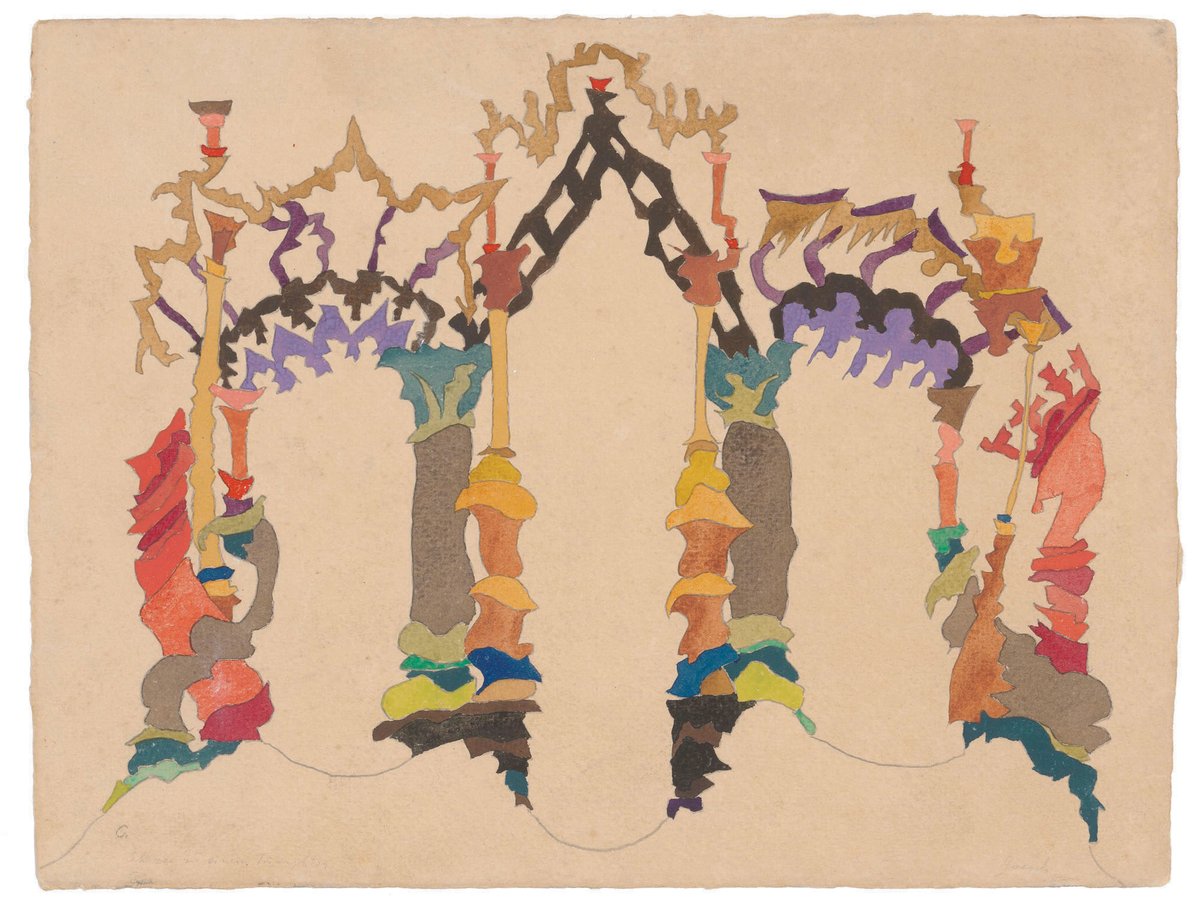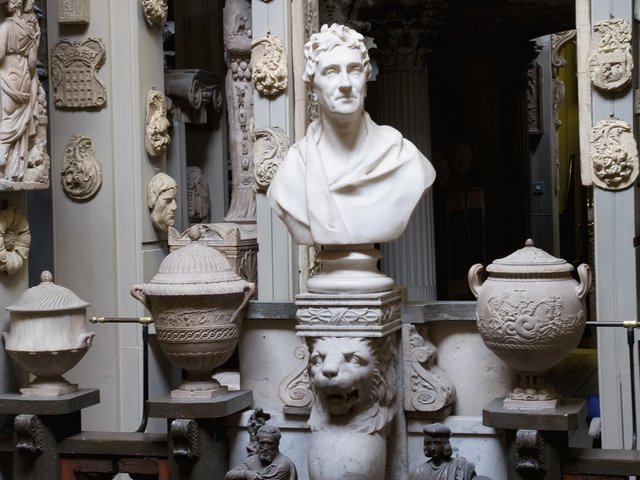The German architect Paul Goesch (1885-1940) was an odd member of a movement that envisioned building a new society atop the ruins of the First World War. Goesch contributed eclectic, colourful designs to the Gläserne Kette (Crystal or Glass Chain), a circle of like-minded architects in Berlin led by Bruno Taut who exchanged unbuilt visionary designs in the early 1920s.
Goesch had been diagnosed with schizophrenia and, after 1921, spent most of his life in institutions. In 1940 he was murdered by the Nazis, among 300,000 killed in the Aktion T4 programme that exterminated the mentally ill and the disabled. Any patient institutionalised for more than five years could be euthanised.
The current exhibition at the Clark Art Institute (until 11 June) in Massachusetts is the first on Goesch outside Germany, and this accompanying publication is the first on the architect in English. It considers Goesch’s warm, seductive colours, stylistic reach and—as argued by the exhibition’s curator, Robert Wiesenberger—how Goesch broadens our sense of what visionary architecture was at that time. Wiesenberger’s collaborator Raphael Koenig, a comparative literature assistant professor at the University of Toulouse II, examines how Goesch’s tragic biography made him hard for Germans to categorise and prolonged his obscurity for decades.
So little is known of Goesch outside Germany that this slim, wondrously illustrated volume will be a revelation. In the years after the First World War, Taut called for the “destruction of artistically valueless monuments” and the construction of a new order with repurposed materials and clusters of structures designed around gleaming, radiant towers, while Hermann Finsterlin, who was also in the Gläserne Kette, championed the construction of forms that seemed like waves of energy. Goesch offered different visions, often architectural fragments that were bolts of colour arranged in a mix of styles. A watercolour of three arches, evoking the Middle Ages or an orientalist improvisation, called Sketch for a triumphal gate, introduced the 1920 Berlin exhibition Ruf zum Bauen (call to build) by the militant Arbeitsrat für Kunst (Workers Council for Art). In a defeated Germany, anything triumphal conceived by a German was utopian.
Other Goesch watercolours glow with a warm, Fauvist palette, evoking Matisse as well as Klee. He crisscrossed columns with what look like Islamic patterns and sometimes topped them with flowers. Decoration that many of his peers abhorred is everywhere, as are elements from the many cultures whose objects had been pouring into German museums since the 1880s. Wiesenberger calls such work “proto post-modern”.
Alongside examples with a naif feel, Portals illustrates sketches of the sort that sent surrealists sifting through the art of the insane for inspiration. One cartoon from around 1920, I Will Be Famous (Self Portrait), shows the bespectacled, Zelig-like Goesch in a courtyard where every wall of every building bears his name. The later works of Saul Steinberg, Jenny Holzer and others come to mind. Some densely composed, semi-abstract ink drawings seem like roadmaps for Jean Dubuffet.
Born into a Lutheran family, Goesch converted to Catholicism at 13 and gravitated to the anthroposophy of Rudolf Steiner. Jesus Christ was a frequent subject in the 2,000 or so works that his family managed to save. The Canadian Centre for Architecture in Montreal, which loaned 34 drawings to the show, has 233. Goesch was prolific, so we can assume that many were lost.
In the 1920s, the Prinzhorn Collection in Heidelberg, which studied “pathological art” or “patient art”, acquired works but saw Goesch as an outlier because he was a trained architect (at the Berlin-Charlottenburg technical college). For architects, he was a colleague too frail to practise. In 1934, German doctors banned him from painting. Four years later, his drawings, seized after they were purged from the Kunsthalle Mannheim, were shown in travelling “degenerate art” exhibitions as a double threat: works by a patient “unworthy of life” and by a political enemy of the Reich.
Yet even after the Nazis’ defeat, Goesch’s drawings were misunderstood. Koenig says Goesch was “pathologised” by psychiatrists seeking evidence of particular mental problems. “Goesch’s presence in postwar psychiatric discourses was thus based on a process of pathologisation that implied the erasure of crucial aspects of his work and identity,” Koenig writes. That presence meant that Goesch was absent from the history of art and architecture—in effect, still locked in the asylum.
With some minimal exposure after 1960, it was only in 1976 that Goesch emerged from that straitjacket, in an exhibition at the Berlinische Galerie. It was the museum’s first show devoted to a single artist. In the US, four Goesch works were displayed along with those of his peers from the 1920s in the 1993-94 show, Expressionist Utopias: Paradise, Metropolis, Architectural Fantasy, at the Los Angeles County Museum of Art. A mural that Goesch made in 1922 in a Göttingen asylum survives, but a wall and ceiling abstract he co-created in 1921 for a dining room in social housing designed by Taut was destroyed in an Allied bombing raid.
How the radiant works reproduced in Portals survived Hitler’s war on the mentally ill and in such good condition is one of the many aspects of Goesch still to be explored. For now, this is the essential book in English on a man who transcended his condition and still paid with his life.
• David D’Arcy is a correspondent for The Art Newspaper in New York
Robert Wiesenberger and Raphael Koenig, Portals: The Visionary Architecture of Paul Goesch, Clark Art Institute, 104pp, 46 colour illustrations, $25.00/£20 (pb), published US 4 April, UK 13 June



